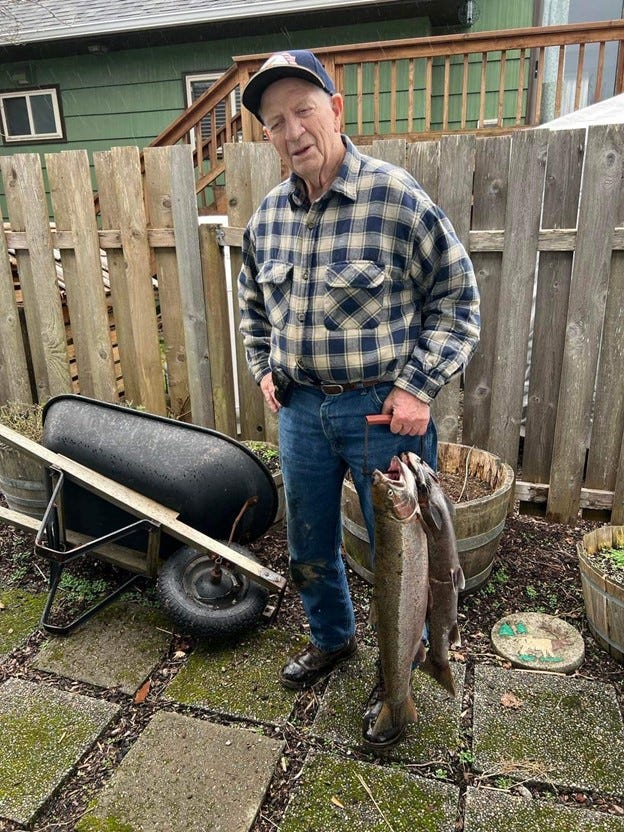
Surplus adult hatchery steelhead to be planted in several coast and southwest Washington lakes open year-round to fishing
Winter steelhead from several hatcheries should provide a bonus opportunity for anglers to catch fish in late winter and spring
Several year-round lakes along the coast and southwest Washington are about to become regional hotspots for steelhead fishing.
Washington Department of Fish and Wildlife (WDFW) hatchery staff have been hard at work stocking surplus adult hatchery steelhead in Black, Cases, Snag and Western lakes in Pacific County; Kress Lake (21 adult steelhead were planted Feb. 10–13), and Horseshoe Lake in Cowlitz County; Fort Borst Park Pond (5o adult steelhead were planted on Feb. 8; 50 on Feb. 15; 50 on Feb. 22; 41 on March 15; and 100 on March 22); Inez, Vance Creek Pond 2 (50 adult steelhead were planted on Feb. 15; 34 on Feb. 21 40 on Feb. 22; 100 on March 22; 34 on March 28; and 95 on April 4) and Lake Sylvia (50 adult steelhead were planted on March 8; 34 on March 15; 101 on March 22; 50 on March 28; 50 on April 4; and 31 on April 11).
Here is the steelhead season update of plants that have occurred per lake and the goal: Fort Borst Park Lake, 291 steelhead released in 2023 (200 was the goal) for 145%; Lake Inez, 319 steelhead released (300) 106%; and Lake Sylvia, 316 steelhead released (300) 105%.
This is part of an ongoing effort to give anglers an opportunity to harvest surplus hatchery steelhead with minimal to no impacts on wild fish. It is expected that hundreds of these high-quality “landlocked” steelhead — weighing an average of 8 to 10 pounds apiece — will be trucked to these lakes and ponds in the weeks ahead.
For freshwater fishing rules including daily catch limits in lakes and ponds, anglers should refer to the current regulation pamphlet. Anglers are not required to record “landlocked” steelhead caught in lakes and ponds on their catch record cards.
Planted fish in WDFW’s Region 6 lakes will feature a tag along their dorsal fin with a phone number to WDFW staff, who will be tracking the success of the program.
Steelhead and rainbow trout are the same species, but rainbow trout are freshwater only, and steelhead are anadromous, or migrate out to sea before returning to spawn. Unlike most salmon, steelhead can survive spawning, and can spawn in multiple years. Release of wild steelhead is required in Washington state and can be distinguished from hatchery steelhead by a clipped adipose fin, found posterior to the dorsal fin and anterior of the caudal fin. Regular planted rainbow trout plants into these lakes will still have an adipose fin and may be kept.
WDFW creel surveyors report anglers are having success using Power Bait or other dough baits or salmon eggs, shrimp and worms attached to a weight and bobber. A variety of fishing spinner lures also works well.
Learn more about fishing opportunities about these and other lowland lakes on the WDFW website.
